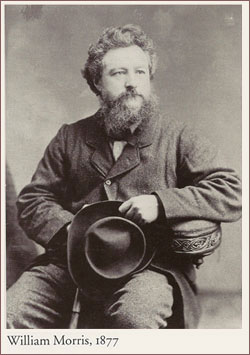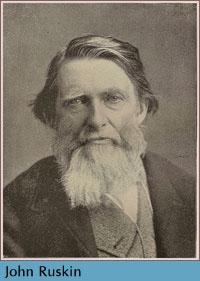What Hath Gothic Wrot?
What’s more, the recognition of remuddling as an act, as well as its condemnation, is over a century-and-a-half old – and with origins not in America but England. Among the many activities of the protean Arts & Crafts designer and  craftsman William Morris was his crusade to expose and halt the rampant, uninformed “restoration” of medieval Gothic cathedrals and church buildings that marched across the British Isles in the 19th century.
craftsman William Morris was his crusade to expose and halt the rampant, uninformed “restoration” of medieval Gothic cathedrals and church buildings that marched across the British Isles in the 19th century.
By the 1840s, Victorian England was caught up in the Gothic Revival movement ignited by, among others, the architect Augustus Welby Pugin, who not only promoted Gothic as the true and proper style for new buildings, but also fueled intense interest in the existing church buildings of the 10th through 15th centuries. While many of these ancient cathedrals and abbeys were indeed suffering by the early industrial era — sometimes abandoned and close to collapse – the fervor of the Revival movement turned many architects and their supporters to “rescuing” these buildings by effectively reconstructing them with stonework, roofs, windows, and decorative details that never existed originally. Morris, who believed the medieval era to be one of great creativity, revered the artifacts of the time as ancient monuments of art. He was appalled by ‘restoration’ work going on around him at the hands of people he considered no better than vandals. Already a highly vocal and effective member of pressure groups and political organizations, in the mid-1870s Morris reacted by coalescing a protest campaign that he nick-named “Anti-Scrape,” a direct reference to the restorers’ practice of scraping old plaster off of historic walls. From here, Morris and his close friend and collaborator architect Philip Webb went on to formalize their opposition in a practical way by forming the Society for the Protection of Ancient Buildings (SPAB) in 1877. As one of the world’s original architectural preservation organizations, the SPAB created a seminal canon of philosophy, practices, and specific repair techniques that continues in the 21st century.
Morris’s backlash may have been vocal and visceral, but it was far from merely emotional. Morris and his like-minded colleagues in the SPAB — as well as  the young Arts & Crafts movement — were inspired by the British critic John Ruskin to view ancient buildings as more than edifices. In “The Lamp of Memory,” one of the sections in his influential book The Seven Lamps of Architecture (1849), Ruskin argued that “restoration” as then practiced produced a building that was actually fiction to the point of being a falsehood (he called it a “lie”). What’s more, Ruskin proposed that careful, ongoing repair was a far better alternative to restoration – a radical notion in the mid-19th century, but a fundamental pillar of American preservation today.
the young Arts & Crafts movement — were inspired by the British critic John Ruskin to view ancient buildings as more than edifices. In “The Lamp of Memory,” one of the sections in his influential book The Seven Lamps of Architecture (1849), Ruskin argued that “restoration” as then practiced produced a building that was actually fiction to the point of being a falsehood (he called it a “lie”). What’s more, Ruskin proposed that careful, ongoing repair was a far better alternative to restoration – a radical notion in the mid-19th century, but a fundamental pillar of American preservation today.
Morris, Webb and other adherents found particular relevance in Ruskin’s call, not only because they viewed ancient, original building construction as evidence of the creativity and beauty of labor freely given – the medieval ideal they saw to emulate in a Socialist society, as well as Arts & Crafts endeavors – but also because a “restored” building would be useless as subject for future study of the past, a notion remarkably ahead of its day.